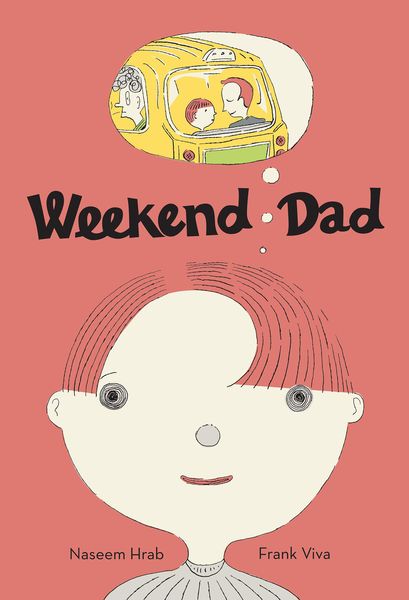The Power of a Great Title
By Naseem Hrab
We all know about the power of a good cover, but what about the power of a great title?
I’ve worked in publishing for nearly fifteen years now and attended upwards of seventy-five tradeshows across North America. One thing I feel like I can say with confidence is that readers notice titles as much as they notice covers. That is, a great title can get someone’s attention as much as a good cover. But that’s not all a title can do!
Before I start writing a new story, I always like to come up with a working title to help direct and shape my story—regardless of whether it sticks in the end. Whenever I lose my focus as I write (which is often), I’ll use this title to remind me of what I’m trying to say. In the early stages of writing a new story, you don’t need your title to be catchy or memorable, you just need it to be purposeful. Sure, I’m open to my intent evolving as my story does, but, in my world, an untitled story is probably one that isn’t saying much of anything quite yet. I basically treat my working title like a guiding light.
Once you reach the final manuscript stage, you might be feeling pretty attached to your working title, but don’t be! Be open to dropping it like a sack of melons. (That’s an expression, right?) It may no longer be a fit anymore. At this stage, you don’t need a purposeful title, you need a memorable one. You need a sticky title and here are my tips for crafting one:
Your CanLit News
Subscribe to Open Book’s newsletter to get local book events, literary content, writing tips, and more in your inbox
- Two steps forward, two steps back: Forget what you wanted your story to be about. Read it with clear eyes. What is it actually about now that you’re done? Your title should capture that new about.
- Make a list: Go through your manuscript and highlight the relevant words, refrains and passages that make up the heart of your book. Your title is probably in there somewhere.
- Be obvious: If your story is funny, your title should make me laugh. If your story is a mystery, don’t shy away from a more conventional title to ensure readers know it’s a mystery. If your story is earnest, embrace it, and make your title earnest. If your story is arty and poetic, pull the most relevant poetic line or image from your story and make that your title.
- Turn each potential title over in your brain: How does it sound when you say it out loud? How much space might it take up on a cover? What might it look like on an ecommerce landing page?
- Do market research: Look up bestselling books that deal with similar topics and study the titles. Is your title in-line with them or an outlier? If it’s an outlier, there better be a good reason. And don’t forget to make sure that there are not 1000 other books out there with the same title.
- Be creative, but not clever: Trying to be clever is like patting yourself on the back, whereas pushing yourself to be creative is a sure-fire way to standout. And you don’t have to be ground breaking—even the slightest twist can help your title stand out and seem unique.
- Don’t make your title too long, unless there’s good reason for it to be: Your title should be fairly easy to remember, or else people will start saying, “You should read … What’s it called? The Curious Incident-something-something. Anyways, you know the one. I’ll text it to you.”
- No title stands alone: Remember that your title will work alongside the cover image. The illustration or image will do some of the heavy lifting, but not all.
- Tagline parade: Young adult books often feature taglines on the cover. I’m not sure why they’re allowed to be more cinematic than picture books, but I’d be interested to see picture books use taglines more. But use them judiciously and only where they make sense, please. I don’t want to see them everywhere, friends.
- A word on subtitles: For nonfiction, clarity is king. And sometimes that means that your subtitle is actually your title.
One last thing I like to do is float titles by friends and family members—the less bookish they are the better. This exercise isn’t exactly useful to be honest, but, sometimes people will interpret your title in a way you never imagined and it’s good to be aware of the different (and sometimes horrifying) ways in which people’s brains can work.
A group of editors and I were brainstorming titles at work for one of our forthcoming books and after settling on the perfect one, we decided that you just know when you have a good title. To quote a line from When Harry Met Sally, “you know the way you know about a good melon.”
The views expressed by Open Book columnists are those held by the authors and do not necessarily reflect the views of Open Book.
Naseem Hrab is the author of the picture books Ira Crumb Makes a Pretty Good Friend and Ira Crumb Feels the Feelings, illustrated by Josh Holinaty. Her comedy writing has appeared on McSweeney's Internet Tendency and The Rumpus. Sometimes Naseem likes to get up on a stage and tell true stories. She loves improv and coffee ice cream.
She worked as a librarian for a time and currently works in children's publishing.



